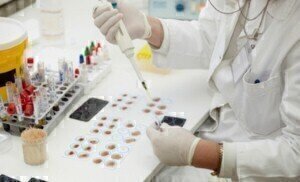News
Foot-and-Mouth Vaccine Signals Huge Advance in Global Disease Control
Apr 03 2013
Scientists have developed a new methodology to produce a vaccine for foot-and-mouth disease virus (FMDV). Because the vaccine is all synthetic, made up of tiny protein shells designed to trigger optimum immune response, it doesn’t rely on growing live infectious virus and is therefore much safer to produce.
Furthermore, these empty shells have been engineered to be more stable; making the vaccine much easier to store and reducing the need for a cold chain. Crucially, this new approach to making and stabilising vaccine could also impact on how viruses from the same family are fought, including polio.
This collaborative research was led by Professor David Stuart, Life Science Director at Diamond Light Source and MRC Professor of Structural Biology at the Department of Medicine University of Oxford and Dr Bryan Charleston, Head of Livestock Viral Diseases Programme at The Pirbright Institute.
Dr Bryan Charleston said, “The FMDV epidemic in the UK in 2001 was disastrous and cost the economy billions of pounds in control measures and compensation. As a result of the outbreak the Royal Society recommended new approaches should be developed to control the virus should it happen again. This important work has been a direct result of the additional funding that was provided as a result of the 2001 outbreak to research this highly contagious disease. Using our detailed knowledge of the immune responses to FMDV in cattle we were able to define the characteristics that needed to be incorporated into the new vaccine platform to induce protection,” said Dr Bryan Charleston.
“What we have achieved here is close to the holy grail of foot-and-mouth vaccines. Unlike the traditional vaccines, there is no chance that the empty shell vaccine could revert to an infectious form. This work will have a broad and enduring impact on vaccine development, and the technology should be transferable to other viruses from the same family, such as poliovirus and hand foot and mouth disease, a human virus which is currently endemic in South-East Asia,” added Prof Dave Stuart, Diamond Light Source and University of Oxford.
The work has principally been funded by the Department for Environment, Food and Rural Affairs, UK (Defra) and the Wellcome Trust.
Digital Edition
Lab Asia Dec 2025
December 2025
Chromatography Articles- Cutting-edge sample preparation tools help laboratories to stay ahead of the curveMass Spectrometry & Spectroscopy Articles- Unlocking the complexity of metabolomics: Pushi...
View all digital editions
Events
Jan 21 2026 Tokyo, Japan
Jan 28 2026 Tokyo, Japan
Jan 29 2026 New Delhi, India
Feb 07 2026 Boston, MA, USA
Asia Pharma Expo/Asia Lab Expo
Feb 12 2026 Dhaka, Bangladesh



















